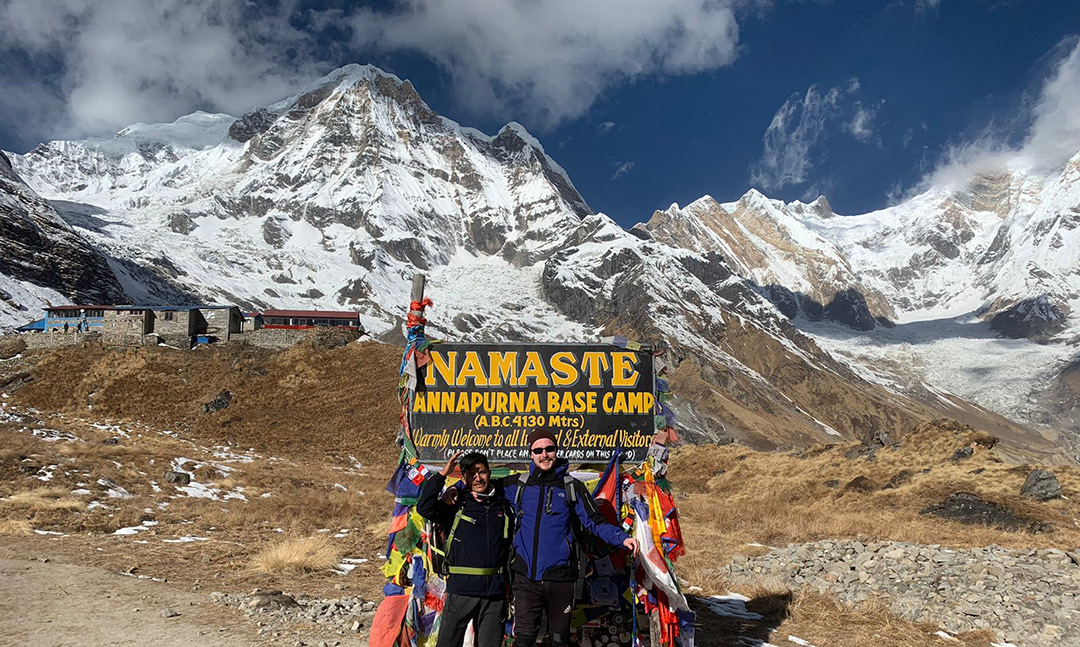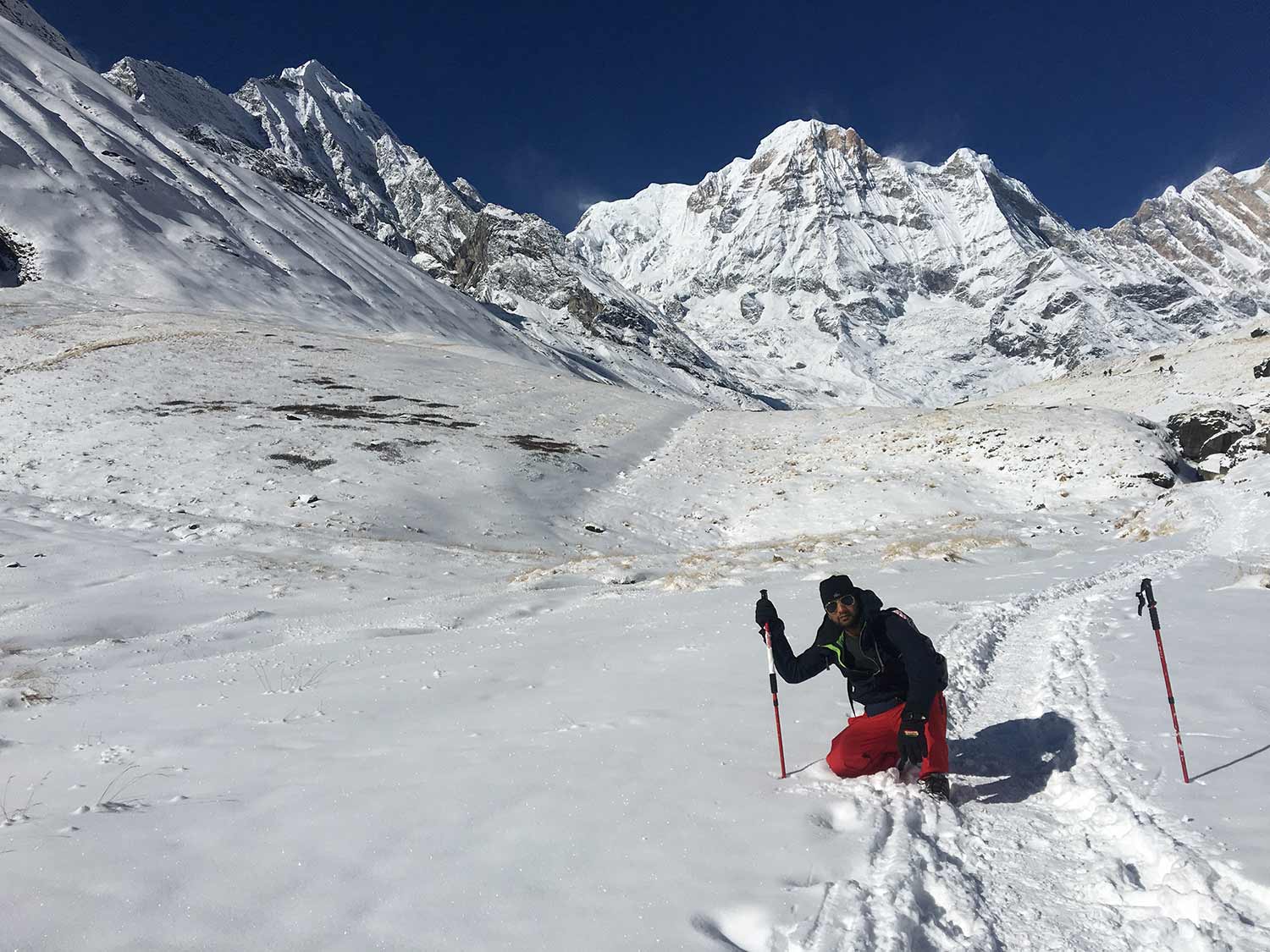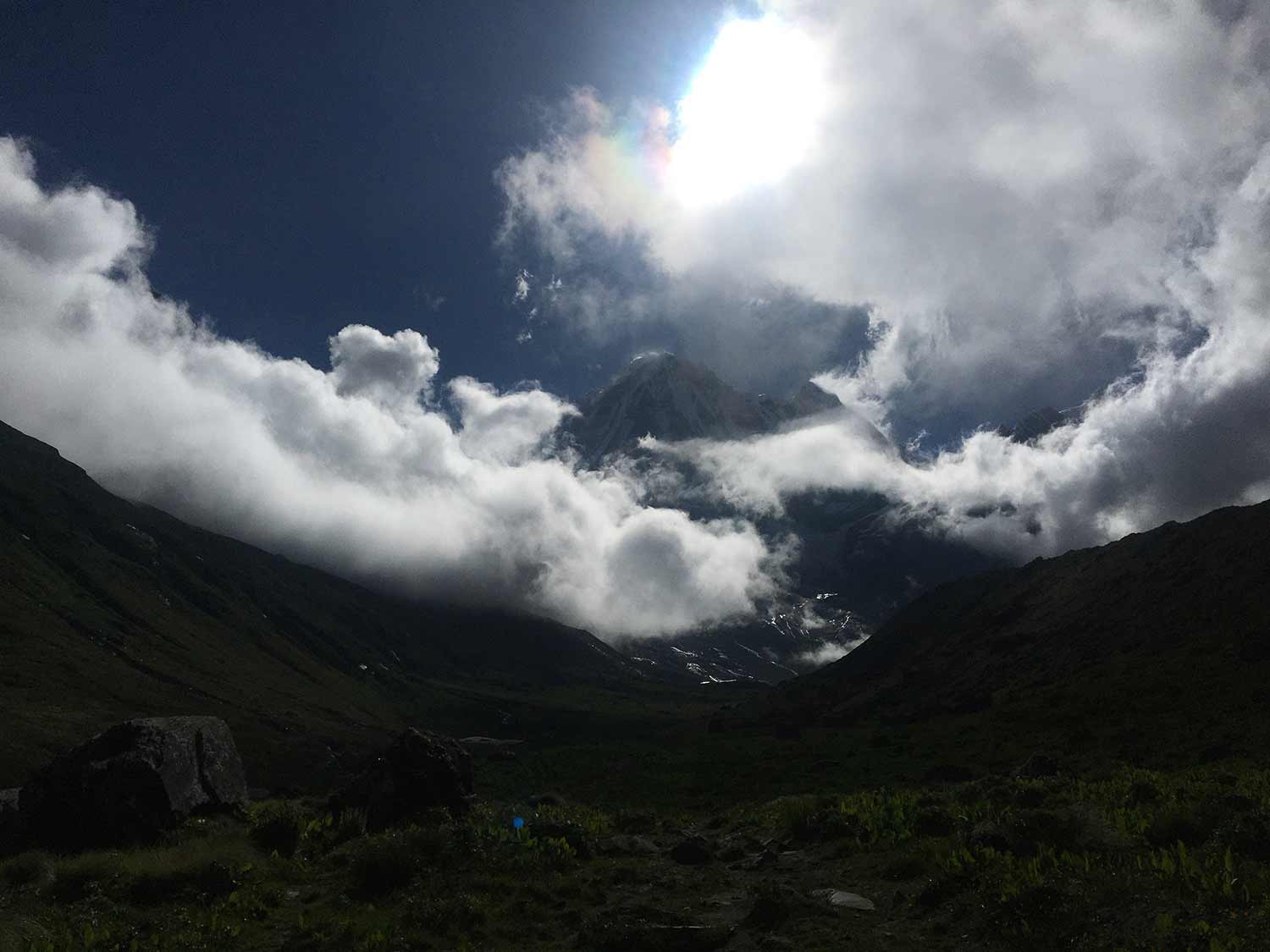16 Things to Know About the Annapurna Massif
Last Updated: November 13, 2025
Tweet
Key Takeaways
|
Feature |
What You Should Know |
|
Annapurna Massif |
Compact cluster of high Himalayan peaks in north-central Nepal. |
|
Annapurna I Height |
8,091 m, the 10th highest mountain in the world. |
|
Danger Level |
One of the deadliest 8,000ers due to avalanches and technical routes. |
|
Trekking Routes |
Annapurna Circuit, Annapurna Sanctuary, and Poon Hill are world favorites. |
|
Fatality Rate |
Around 20%, one of the highest among all 8,000 m peaks. |
|
Location |
Gandaki Province, above Pokhara, visible from Lakeside on clear mornings. |
|
First Summit |
1950 French expedition led by Maurice Herzog. |
|
Conservation Area |
7,629 km² protected landscape inside Nepal’s largest conservation area. |
The Annapurna Massif is a breathtaking 55-kilometer wall of ice, rock, and ridges rising above north-central Nepal. It is the compact “heart” of the larger Annapurna mountain range, home to one 8,000-meter giant and dozens of dramatic peaks above 6,000 and 7,000 meters. Its centerpiece, Annapurna I Main, stands tall as one of the most legendary and feared summits in the world.
When our volunteer travelers talk about Nepal, this massif often comes up first. Many of them recall their first glimpse of its snow peaks from Pokhara’s Lakeside , a moment that stays with you forever. Here we share you the facts about this magnificent massif that contains some of the highest peaks of the Himalaya.
Annapurna Mountain Range

The Annapurna mountain range is a wider Himalayan region that includes the Annapurna Massif but stretches far beyond it. This range is home to valleys, rivers, villages, and iconic peaks like Machhapuchhre (Fishtail), which remains sacred and unclimbed.
Most travelers might use “massif” and “range” interchangeably, but the massif is the tight cluster of high peaks, while the range is the full sweep of mountains and trekking routes around it.
Annapurna Massif Map
If you look at an Annapurna massif map, you’ll notice how beautifully this block of mountains sits within Nepal’s geography.
Boundaries of the massif:
- West: Kali Gandaki Gorge, the deepest gorge on Earth
- North and East: Marshyangdi River
- South: Pokhara Valley
- North: Manang and the high Thorong La region
Its GPS center is roughly 28.5952° N, 83.8204° E, and from the city of Pokhara, you can see the entire wall glowing in the sunrise.
Annapurna Massif Hike

While summiting Annapurna I requires expert alpine climbing, the region surrounding the massif offers some of the world’s most beautiful and accessible trekking trails.
Annapurna Circuit
A full journey around the massif, passing through villages, waterfalls, high passes, and diverse landscapes. Thorong La Pass at 5,416 m is the highlight. Many of our volunteer travelers say the Circuit was the most transformative trek of their lives.
Annapurna Sanctuary Trek (ABC Trek)
This trail takes you into the heart of the massif, reaching the base camp at 4,130 m. You’re surrounded by a 360° ring of peaks , a natural amphitheater of giants.
Poon Hill - Ghorepani Trek
Short, scenic, and perfect for beginners. The sunrise here gives a full panoramic view of the entire Annapurna range.
Annapurna Massif Facts
- Annapurna I was the first 8,000-meter peak ever successfully climbed (1950).
- The massif contains Annapurna I Main, II, III, IV, Gangapurna, and Annapurna South.
- “Annapurna” means “Goddess of Nourishment,” referencing the rivers that feed Nepal’s plains.
- Machhapuchhre (Fishtail), part of the broader range, is sacred and has never been summited.
- The massif lies inside the Annapurna Conservation Area, Nepal’s largest protected region.
- Over 100,000 trekkers visit this region every year.
Why is Annapurna So Dangerous?

Annapurna’s danger comes from natural, unpredictable forces that even the best climbers struggle to overcome.
- Avalanches: Over 60% of deaths come from massive avalanches caused by unstable hanging glaciers.
- Technical terrain: Steep routes, fragile ice, and mixed rock sections make climbing highly challenging.
- Sudden weather shifts: Storms can roll in within minutes.
- Unstable seracs: Ice blocks can collapse without warning.
- Minimal fixed ropes: Climbers rely more on skill than infrastructure.
Its south face, a 3,000-meter vertical wall, is often called one of the hardest faces in the world.
Annapurna Height
Annapurna I Main rises to 8,091 meters (26,545 ft), making it the world’s 10th highest mountain. Despite not being the tallest, its complexity and instability make it one of the most feared ascents.
Why is Annapurna the Deadliest Mountain?
Historically, Annapurna has had the highest fatality rate among all 8,000-meter peaks. For decades, roughly one climber died for every three who summited.
Modern equipment reduced the percentage slightly, but it remains around 20% , still exceptionally high.
Compared to Everest’s commercialized routes and extensive support systems, Annapurna remains a raw, unforgiving climb.
Where is Annapurna Massif?
The Annapurna Massif lies in north-central Nepal, inside Gandaki Province. It covers multiple districts such as Kaski, Myagdi, Mustang, Manang, and Lamjung.
Pokhara, Nepal’s adventure capital, sits just south of the massif. On a clear morning, our team and travelers often mention seeing the entire mountain wall glowing above the valley , a surreal and humbling view.
How Many People Died on Annapurna?
As of November 2025, the climbing records show:
• 387 total summits
• 76 climbers lost
The Himalayan Database remains the main source for these records. Major tragedies and avalanche seasons have shaped Annapurna’s dangerous legacy.
Why is Annapurna Harder Than Everest?
Climbers often say:
Everest tests your endurance. Annapurna tests your survival.
Here’s why:
- Everest has fixed ropes all the way to the top. Annapurna has almost none.
- Most Everest climbers use oxygen; Annapurna ascents rarely do.
- Everest has predictable commercial routes. Annapurna has unstable avalanche zones.
- Climber traffic on Everest clears trails; Annapurna sees far fewer expeditions.
- Annapurna’s technical difficulty is significantly higher.
- While Everest is taller, Annapurna demands far more technical skill and resilience.
What’s So Special About Annapurna I?

Annapurna I is special because of its place in history and its raw alpine character. It was the first 8,000-meter peak ever climbed, a milestone that changed the world of mountaineering forever. Its south face remains one of the most revered and intimidating walls on the planet.
For trekkers, this peak symbolizes the heart of Nepal’s mountain culture , pure, unfiltered, and awe-inspiring.
How Many People Have Climbed Annapurna?
By late 2025, 387 climbers have successfully summited Annapurna I Main. The number remains small compared to Everest’s yearly 600-1,000 summits, reinforcing just how exclusive and difficult this mountain truly is.
To share this link:
Please click here to get the complete details on available trips, destinations, accommodation, cost and the rest of it.
Get More Info Now »


